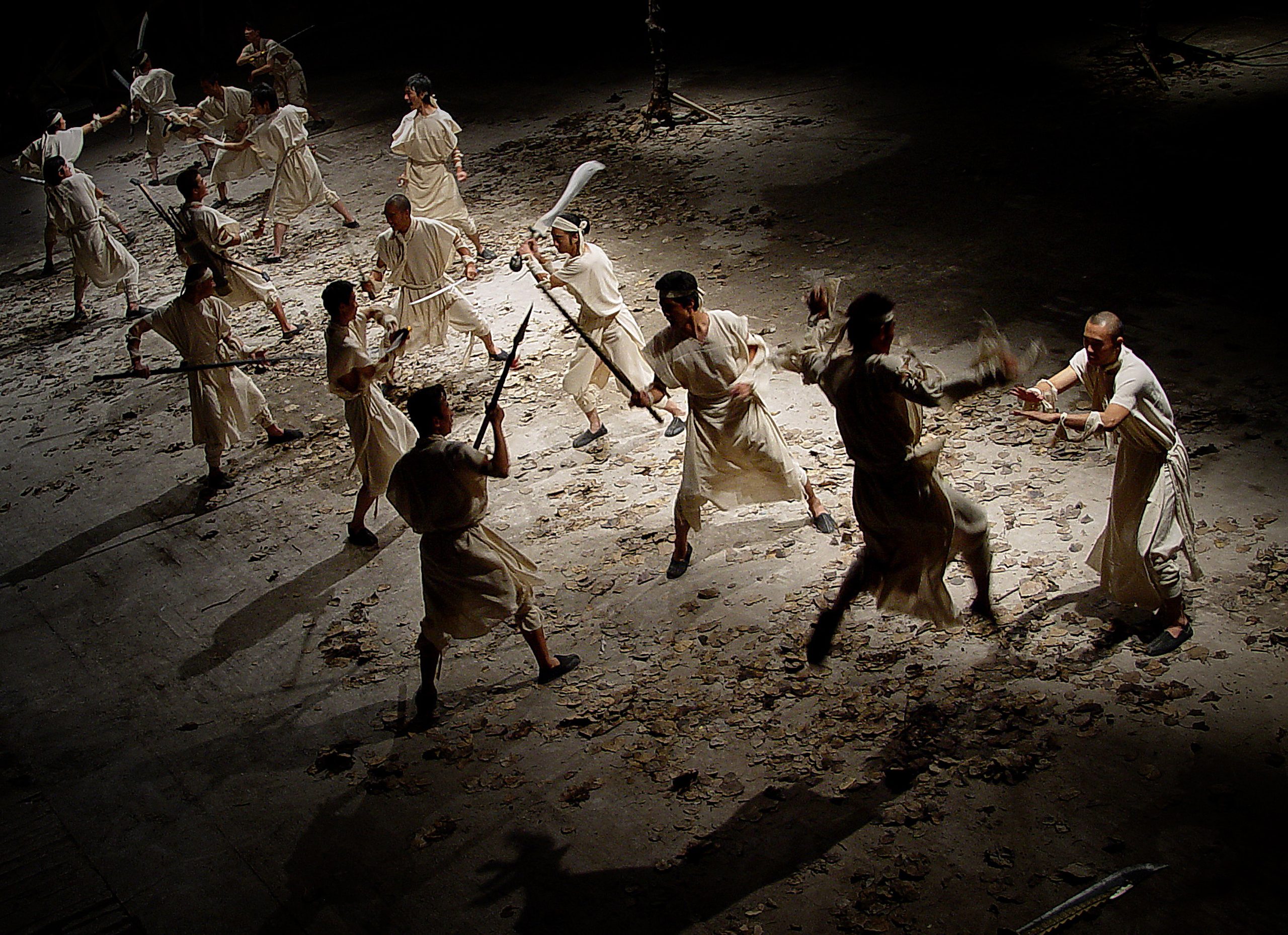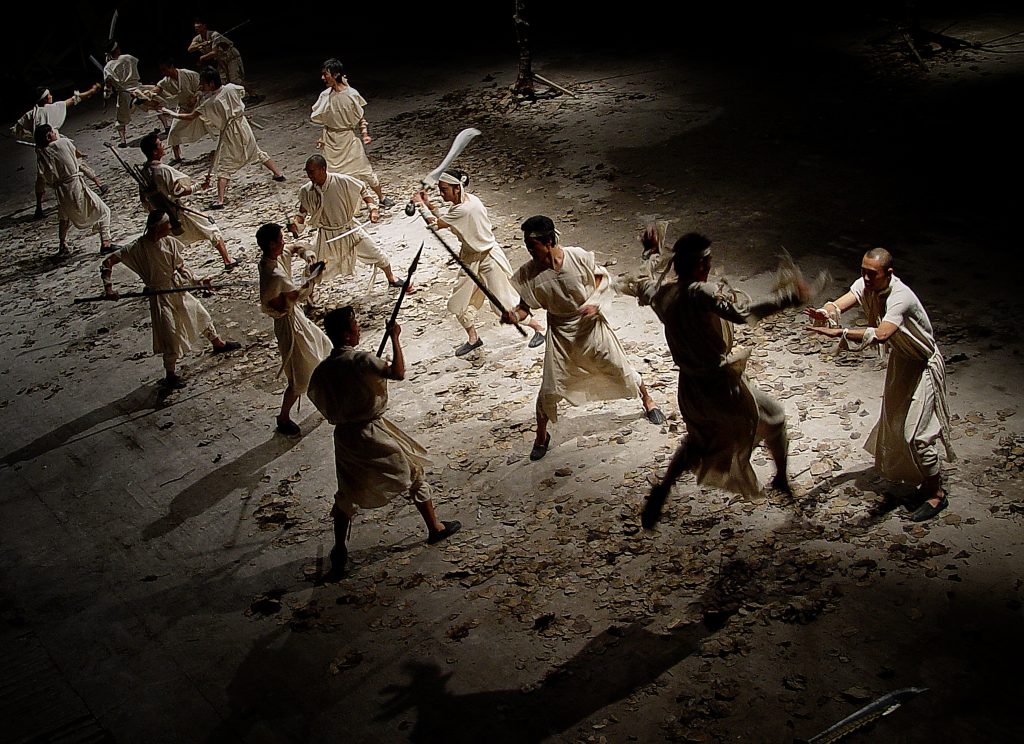Film
Flying Bird is motionless
2005
The concept of “a flying bird is motionless” derives from the Greek philosopher Zenon. He hypothesized that if time is made of many small moments, when a bird is flying it is actually not moving.
I’d rather believe that Zenon’s hypothesis was not meant to build a more perfect world based on such logic but to provide a new way of understanding the world. It demonstrates that uncertainty exists among the order of things, and thus allows us to make more speculations on space. At the same time, Zenon, in the form of questions, led us to notice the incomprehensible in the law of inertia. He made us notice that there are errors and holes in this perfect and reliable world, no matter in what way you point them out.
The other part [of the current exhibition] comes from the Chinese lianhuanhua (pictorial or storybooks) named Shuanglong hui (Double Dragons). Lianhuanhua was an important narrative form in China from the 1950s to the 80s. It is also the base and nascent form of the medium of Chinese soap operas and sit-com TV shows. It provides the narrative form of juxtaposing texts and images, and re-interprets history and culture in a formatted, popular, and easily understandable way.
Shuanglong hui is an episode from the famous Song dynasty (960-1279) story Yangjiajiang (Generals of the Yang Family). The eight brothers of the Yang family, one by one, disguised themselves as the emperor and his officials to attend dinner parties in enemy countries in order to help the emperor to flee. The ending of the story is extremely heartbreaking but heroic. Their actions have also become one of the most famous canonic stories of heroism in Chinese history.
The lianhuanhua of Yangjiajiang, which was published in 1961, re-narrated the canonic scene of Shuanglong hui. It translated and transformed the historical event in the most popular form at the time. It responds to the famous Neo-Historicist theory of “the historicity of literary texts” and “the literary texts of history.” We can only understand history from the “preserved and survived” but not “complete” literary texts. History becomes a medium. It can be repeatedly described at any point in time. History can thus be understood as being incessantly halted moments.
The concept of “a flying bird is motionless” gives me a new approach and a new understanding of a “process.” It allows me, in the means of re-constructing an “event,” to experiment with a kind of new connection, including the connection to today’s society and to contemporary art.
The entire plan of the exhibition Relativism: A Flying Bird is Motionless comes from a completely closed space. In an environment “detached from the world,” there is no concrete time but well-defined space; there is no concrete objective but well-defined object. The whole event takes place in the canonic model of Chinese martial art, and mixes with an individual’s understanding of his or her “role” as an “actor” or “actress.” It is an imitation in a collective manner and an expression from the unconscious. They perhaps receive some indications and are controlled by some rules, including their behaviors. But there also seem many unplanned happenings directly coming from their bodies … In this particular space, the original and complex historical relationship is simplified to series of consecutive actions, but the narrative space is limited to a singular narrow space, disconnected from its relation with any other place. A segment loses the bigger environment, which is its reference. There are only meticulous details but no background to support the details. The moments provided by the space are only “temporary” histories without any depth. With no particular reference, should the space be interpreted as a square, a battlefield, or a real scene? Because of the openness of the space, its meaning becomes uncertain. We cannot determine whether an event is a conflict at large or a collective representation of the clashes among many individuals. At the same time, “a flying bird is motionless” gives me impulse. I want to build a place with both continuity and discontinuity by using new digital technologies. Will they create an alien place that can contain more dreams and imaginations? It is a reference to the parallel progress of the society. Furthermore, the multiple non-linear narrations offer new possibilities to the visuals.
October 1, 2005

